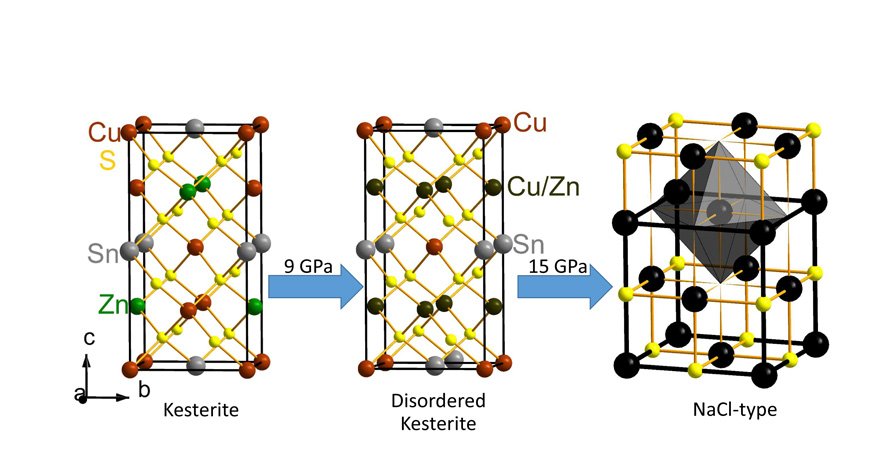We use our experimental and analytical equipment also to synthesise and characterise New Materials for potential industrial applications. Long-term, these materials could complement natural georesources.
Kesterite Cu2ZnSnS4
Chalcogenide semiconductors have attracted significant attention over the last decades, as ideal candidates for photovoltaic applications. Among the various candidates for this purpose, the quaternary Cu2ZnSnS4 compound constitutes a promising material due to:
- a) an almost optimal band gap (Eg ~ 1.5 eV),
- b) its large absorption coefficient in the visible range (~ 104 cm-1),
- c) demonstrated power conversion efficiencies close to 10%,
- d) the high natural abundance and
- e) the non-toxicity of its constituents.
Nevertheless, the power conversion efficiency of Cu2ZnSnS4 thin films still lies far away from the theoretical limit of ~ 30%. Hence, it becomes imperative to explore the physical properties of this system also as a function of pressure further, as a means of improving its photovoltaic performance.
The scientific goal of this project is the investigation of the pressure-induced effects on these materials by means of vibrational spectroscopy (in-house) and x-ray diffraction (synchrotron-based experiments). Our results will enrich current efforts worldwide for finding suitable earth-related substitutes for energy applications.
Mg-Fe-N and Ge-Si solid solutions
Nitrides and Ge-Si solid solutions are important materials in design, power and information engineering as well as in the semiconductor industry. In this project we examine the high pressure and high temperature conditions of the magnesium-iron-nitrides and the Ge-Si synthesis. We employ multi-anvil apparatus and diamond anvil cells in the synchrotron storage rings in Hamburg (PETRA III) and in Grenoble, France (ESRF).
Contact
Dr. Ilias Efthimiopoulos
Dr. Hans Josef Reichmann
Partner
Prof. Dr. Martin Lerch, TU Berlin
Dr. George Serghiou, School of Engineering, The University of Edinburgh, UK


